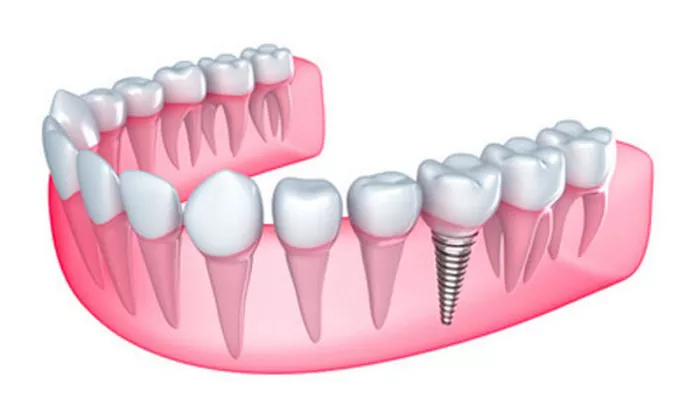Osseointegration is a critical biological process where a dental implant forms a stable bond with the surrounding bone tissue. This process ensures that the implant can function similarly to a natural tooth root, offering structural support for crowns, bridges, or dentures. Without successful osseointegration, a dental implant will not be secure enough to handle daily oral functions such as chewing and speaking.
What is Osseointegration?
The term “osseointegration” was first introduced in the 1960s by Dr. Per-Ingvar Brånemark, a Swedish orthopedic surgeon. It describes the direct structural and functional connection between living bone and the surface of a load-bearing artificial implant. In dental applications, this process occurs when the titanium or zirconia implant fixture becomes fully integrated into the jawbone without fibrous tissue in between.
Why is Osseointegration Important?
Osseointegration is what distinguishes dental implants from traditional dentures and bridges. The integration ensures long-term stability, preventing bone loss and maintaining facial structure. Successful osseointegration also minimizes the risk of implant failure and provides a foundation for the restoration to last many years, if not a lifetime.
Typical Timeframe for Osseointegration
On average, osseointegration takes about three to six months. However, this timeframe can vary based on several individual factors, including the patient’s bone quality, implant location, overall health, and the specific technique used during the dental implant procedure. For example:
- In the lower jaw (mandible), integration may occur more rapidly due to denser bone—often within 3-4 months.
- In the upper jaw (maxilla), where the bone is typically softer, it may take up to 6 months.
Factors That Influence Osseointegration Time
1. Bone Density and Quality
Bone density plays a pivotal role. Denser bone provides a more stable environment for the implant to integrate quickly. Patients with osteoporosis or bone resorption may require bone grafting before implant placement, adding several months to the timeline.
2. Implant Surface and Material
Modern implants come with specially treated surfaces to encourage faster and more robust integration. The surface texture—whether it’s roughened, acid-etched, or coated with bioactive materials—enhances cellular attachment and bone growth.
3. Surgical Technique
The method used during dental implant surgery significantly affects healing. Minimally invasive procedures generally result in faster healing times. Immediate loading implants (where the crown is placed shortly after surgery) may demand more precise surgical execution to avoid micromovement that can hinder integration.
4. Systemic Health Conditions
Patients with diabetes, autoimmune disorders, or those undergoing radiation therapy often experience slower healing. Proper medical management can mitigate some risks but may still influence the osseointegration timeline.
5. Smoking and Lifestyle Habits
Nicotine reduces blood flow, negatively impacting bone healing and integration. Patients who smoke are advised to quit at least several weeks before and after the procedure to improve outcomes.
6. Medications and Supplements
Some medications, such as bisphosphonates and corticosteroids, can affect bone metabolism. Informing the dental team about all current medications is essential for accurate planning and timeline expectations.
The Stages of Osseointegration
1. Primary Stability
This is the mechanical stability achieved immediately after implant placement. It depends heavily on the surgical technique and bone density.
2. Secondary Stability
Over time, biological processes begin to form new bone around the implant. This is the phase where osseointegration actually occurs, replacing primary stability with biological stability.
3. Maturation
During this final stage, the bone around the implant matures and mineralizes, achieving long-term integration capable of supporting normal oral functions.
Immediate vs. Delayed Implant Loading
Immediate Loading
In specific cases, a crown or bridge may be placed on the implant shortly after surgery. While this approach offers aesthetic and functional benefits, it requires high primary stability and excellent bone quality to avoid failure.
Delayed Loading
This is the traditional approach where the implant is left undisturbed for 3 to 6 months to allow full osseointegration before the final prosthetic is attached. It remains the most reliable method, especially in patients with lower bone density or systemic health concerns.
Common Issues Affecting Osseointegration
1. Infection (Peri-implantitis)
Inflammation and infection around the implant site can compromise bone integration. Maintaining excellent hygiene and attending follow-up visits are essential preventive measures.
2. Micromovement
Even slight movement of the implant during the healing phase can disrupt the bonding process. That’s why in many cases, the implant is kept unloaded for several months.
3. Bone Grafting Failure
In cases where bone grafts are used to support implant placement, failure of the graft can delay or prevent osseointegration.
How to Support Successful Osseointegration
- Quit smoking several weeks before surgery.
- Follow all post-operative care instructions diligently.
- Maintain excellent oral hygiene and use antiseptic rinses if recommended.
- Avoid chewing hard or sticky foods during the healing phase.
- Attend all scheduled follow-ups and report any unusual symptoms.
When to Contact Your Dentist
If you notice persistent swelling, unusual pain, implant mobility, or signs of infection, contact your dental provider immediately. Early intervention can often resolve issues before they affect the osseointegration process permanently.
Conclusion
The timeline for osseointegration varies from patient to patient, but understanding the influencing factors can help set realistic expectations. On average, patients should expect a healing period of three to six months before their implant can be fully restored. Adhering to medical guidance, maintaining good health, and choosing a qualified implant specialist all contribute to successful outcomes.
If you’re considering implants or are in the planning stages, speak with your dental provider about your specific healing timeline and how to optimize conditions for osseointegration.
Related topics

